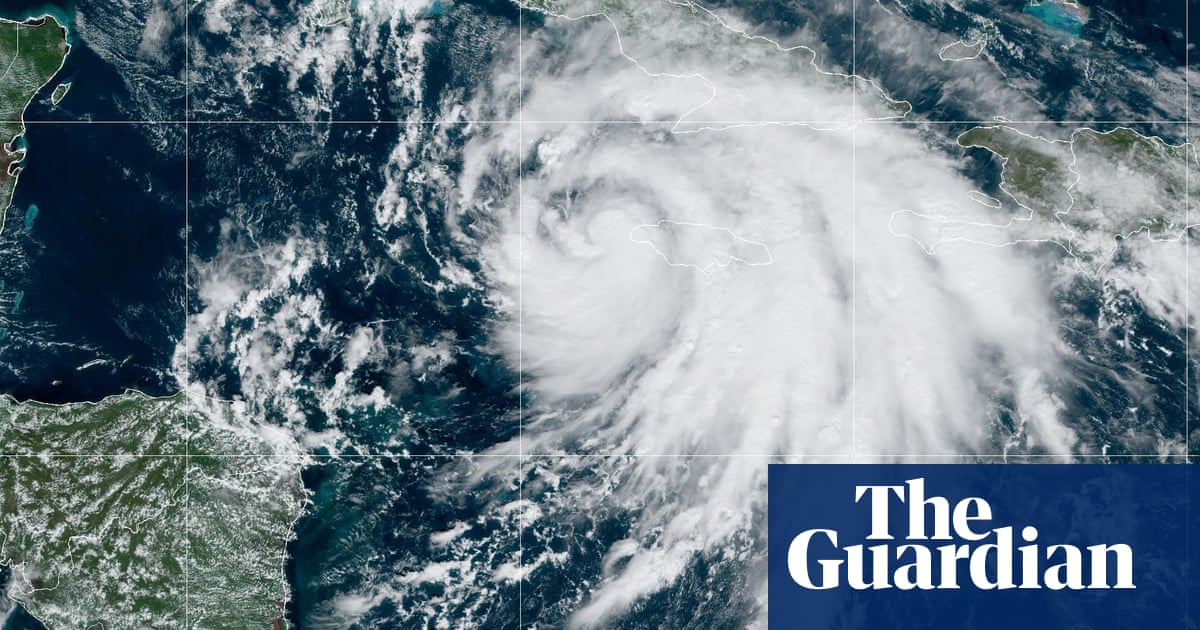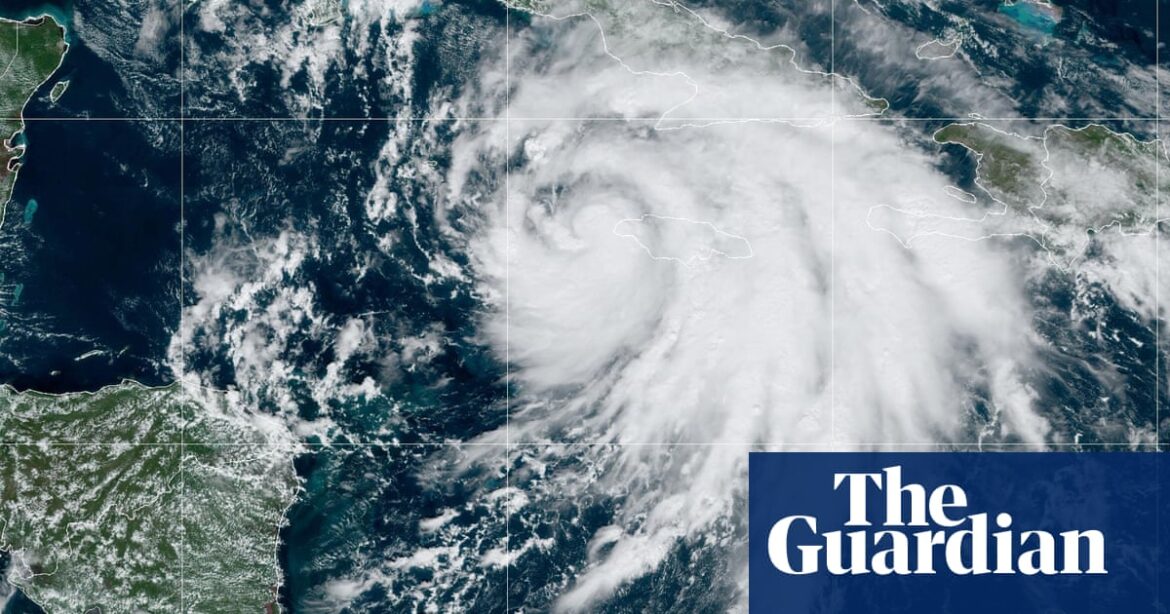
Tropical Storm Rafael has grown more powerful in the Caribbean Sea and is poised to reach hurricane strength on Wednesday, carrying the risk of damaging wind and rainfall. But it should weaken as it approaches the US Gulf coast, where several states have not been hit by a hurricane in November, according to records maintained since the early months of the US civil war.
Portions of the Florida Keys could see tropical storm conditions starting on Wednesday night, according to the National Hurricane Center.
If Rafael approaches that area around high tide, Dry Tortugas could see 1-3ft of storm surge, which is a wall of water pushed inland by a storm’s winds. And the Lower Keys could see 1-2ft of storm surge, which are manageable levels. The National Hurricane Center said that several tornadoes are possible over the Keys, as well as Florida’s southernmost mainland, on Wednesday.
Rafael traveled north-west on Tuesday morning, bringing heavy rain to Jamaica, the Weather Channel meteorologist Jim Cantore said on Tuesday on X. “Jamaica and the Cayman Islands should have a nasty day and night with western Cuba getting it tomorrow,” Cantore wrote. “Depending on how fast it can intensify conditions will transition from [tropical storm] to hurricane over The Cayman Islands tonight.”
The National Hurricane Service (NHS) said that Rafael could bring “damaging hurricane-force winds, a dangerous storm surge, and destructive waves” as it nears the Cayman Islands on Tuesday evening. The storm is expected to reach hurricane status near the Caymans and strengthen further before making landfall in Cuba.
Rafael’s threat to Cuba comes just weeks after Hurricane Oscar dumped heavy rains on the island, leading to a nationwide blackout and killing at least seven people. Cuba is facing a lengthy recovery period, made all the more perilous by its worsening economic crisis, according to the Associated Press.
Meteorologists have also warned warn that the higher areas of Cuba – as well as Jamaica – are at risk of flash flooding and mudslides.
Forecasters believe that Rafael might also cause heavy rainfall in other US Gulf states, though dry air and lower water temperatures are expected to strip the storm of its hurricane intensity.
Some projections posit that the Louisiana coast, including New Orleans, and Mississippi could possibly see effects from the storm. Records dating to 1861 indicate that neither Louisiana, Mississippi, nor Texas have seen a hurricane make landfall in November, according to the New Orleans outlet WDSU.
The news outlet notes how a landfall-making hurricane at this time of year would be anomalous overall. Over that same period, records indicate that just eight hurricanes have made landfall on the Gulf coast in November.
Hurricane Etna was the last such storm to do so. The 2020 hurricane made landfall in Nicaragua, Cuba, Lower Matecumbe Key and Cedar Key, Florida, WDSU reported.
Rafael is the 17th named storm of the 2024 Atlantic hurricane season, according to NBC News. Rafael will become the 11th hurricane if it grows in strength; the Atlantic hurricane season typically sees 14 named storms, with seven hurricanes, three among those considered major.
after newsletter promotion
While the Atlantic hurricane season ends on 30 November, it is usually most active around 10 September, NBC News said. The 2024 Atlantic hurricane season had 10 named storms from 24 September to 4 November, which is the “most on record for this time span”.
Meteorologists had expected an unusually active hurricane season due to record-high sea surface temperatures in the Atlantic Ocean. Rising sea temperatures are widely attributed to global warming primarily driven by humans’ burning of fossil fuels.
The 2024 Atlantic hurricane season has wreaked extensive destruction in the US. Hurricane Milton, which made landfall in Florida on 9 October, resulted in dozens of deaths and cost a whopping $50bn in damage.
Just two weeks earlier, Hurricane Helene’s rains razed entire towns in western North Carolina, killing hundreds. Before striking North Carolina, Hurricane Helene’s deadly storm surge flooded large portions of Florida, destroying homes and businesses.
It also devastated several other south-eastern US states.
Source: theguardian.com



